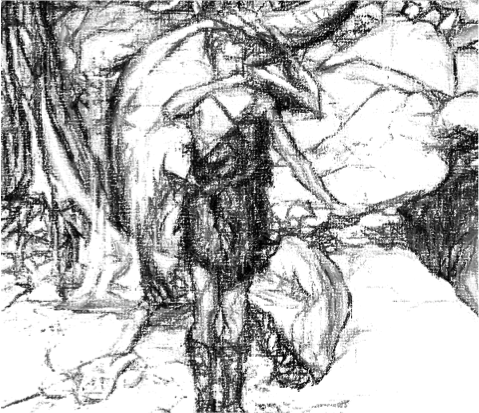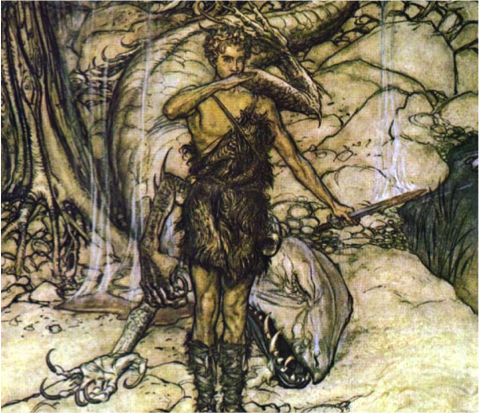Music Guide Siegfried
Wagners Oevre holds many musical mysteries. The opera Siegfried is no exception:
- How is Siegfried's maturation into a man reflected in his motifs?
- Why are forest birds and Rhinemaidens musically related?
- What message is contained in the World Heritage motif?
The Siegfried music guide provides answers. A short synopsis of each scene provides an immediate overview.
The leitmotifs and musical design of the work are clearly explained using musical examples.
The
audio samples make the explanations easy to understand.
Scope
- 56 pages
- 42 sheet music and audio examples, playable in the browser of your smartphone or PC
Reading sample
Mime had tried without success to mend the sword in the conventional way. Siegfried defies all conventions of the blacksmith's art: The revolutionary breaks the sword into smaller fragments before melting them and casting them into a new form. He christens the sword with its old name, Notung:
♫ Example 24: Notung motif

The Notung motif is characterized by falling octaves ("exclamation points"), which are also part of the sword motif.
The outmoded form is replaced, substance and name of the sword, symbols for soul and destiny, remain. Then Siegfried kindles a mighty fire and melts down the small pieces of the sword. The melting song is determined by the falling lines of the Wanderlust motif:
♫ Example 25: Derivation of melting song. In the audio example, the freedom sequences of the Wanderlust motif are first played in the original and in the rhythm of the melting song. Then the melting song follows.

The motif essentially consists of the freedom sequences of the Wanderlust motif (Example 18). The sword is a symbol of freedom for Siegfried. Armed with it, he finally wants to leave Mime. In contrast to the creative vitality motif, here numerous sequences each follow the preceding sequence one tone lower. In the melting down, the notes fall musically as well.
While Siegfried pours the molten metal into a new mould and forges the sword, Mime brews a sleeping potion with the help of which he intends to kill Siegfried. (...)
Samples
To hear all the audio examples click on the image


- Derivation brooding motif
- Mime's displeasure
- Woe motif
- Forge motif
- Hoard motif
- Prelude Act 1
- Sword motif
- Dragon motif
- Horn motif
- Siegfried motif
- Siegfried motif in Act 3
- Rant motif
- Derivation Mime motif
- Mime's education song
- Siegfried's longing for love
- Wälsungs’ motif
- Wälsungs’ suffering and Sieglinde
- Wanderlust motif
- Wanderer motif
- Contract motif
- Mime's fear
- Derivation slumber motif
- Creative vitality motif
- Notung motif
- Melting song
- Derivation Fafner motif
- Curse motif
- Hate motif
- Forest weave motif
- Wood bird motif
- Erda motif
- Twilight of the Gods motif
- Disgruntlement motif
- Ride motif
- Sleep motif
- Fate motif
- World heritage motif
- Love spell motif
- Love confusion motif
- World greeting motif
- Love greeting motif
- Love covenant motif
 MusiCosa
MusiCosa
